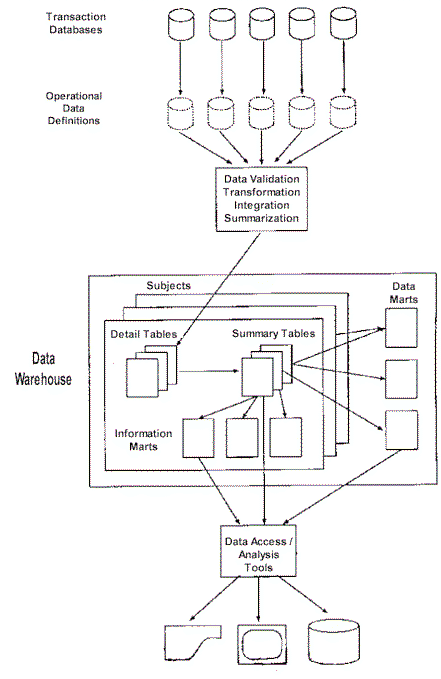Using SPD Server with Data Warehousing
SPD Server offers data
warehouse users an excellent facility to store data. Using component
files and partitioning, SPD Server alleviates large table constraints
such as device or directory size limits. SPD Server can perform storage
services on a reliable and relatively inexpensive machine.
Besides providing efficient,
economical storage, SPD Server can deliver the enhanced processing
capabilities users need to manage and query data in a warehouse. SMP
processing provides the machine's horsepower to parallel-process huge
tables. SPD Server offers multiple access, domain protection, and
table locking. These features enable data warehouse users to secure
and access their shared SPD Server.
Within a data warehouse,
there are several data stores (repositories for data). Three stores
are of interest in the previous figure: detail tables, summary tables,
and data marts. Organizations often store transactions that are up
to 90 days old in a detail table, transactions that are up to a year
old in a summary table, and additional data snapshots in data marts.
These three data stores share a common requirement—they must
maintain hundreds of gigabytes of data.
To perform queries,
data warehouse users can use SAS with SAS syntax or PROC SQL syntax.
Alternatively, SPD Server supports the use of other vendor applications
that allow SQL pass-through and that comply with other connection
standards that are not SAS. In brief, SPD Server can contribute significantly
to the objectives for a data warehouse: to deliver low-cost, relevant,
machine-independent, and timely information to users throughout the
organization.
